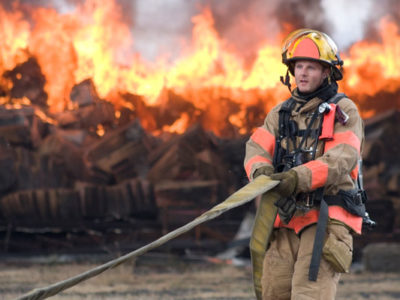 Statistics presented by the Occupational Safety and Health Administration (OSHA) show that in America, work-related fires and explosions account for more than 5,000 burn injuries each year—hundreds of those injuries are fatal. Burn victims are often given workers’ compensation if the burn is work-related.
Statistics presented by the Occupational Safety and Health Administration (OSHA) show that in America, work-related fires and explosions account for more than 5,000 burn injuries each year—hundreds of those injuries are fatal. Burn victims are often given workers’ compensation if the burn is work-related.
Clark & Smith represents burn victims and fights for workers’ compensation! Call us at 877-251-5040 today.
Workers’ compensation, also called workman’s comp, is a type of insurance provided by a company for an employee who was injured in the course of employment. Workman’s comp includes payment of medical bills, out-of-pocket expenses, and a percentage of lost wages.
The process of workman’s comp begins when you file a DWC-1, which is a form detailing your injury. Your employer should give you a list of physicians approved by your company, and you can choose one as your primary doctor. After treatment, your doctor will determine when or if you can return to work. If your company refuses to give you worker’s compensation, contact Clark & Smith immediately.
Types of Burns & Ratings
There are three types of burns that can have a devastating effect on workers: chemical, electrical, and thermal.
- A chemical burn occurs when an irritant (such as acids) comes in contact with soft tissue.
- An electrical burn occurs when a person touches alternating current or direct current.
- A thermal burn is the result of a person touching something hot such as a curling iron, fire, steam, or hot water.
Every burn ranges in severity from a first-degree burn to a fourth-degree burn. A first-degree burn only affects the outer layer of the skin and is often treated with ointment and a bandage. The most severe burn is a fourth-degree burn, which scars deep tissue and organs and can be fatal. Regardless of the degree, burn victims should go to the nearest medical facility to receive treatment.
History of Workers’ Compensation
Workers’ compensation dates back over 4,000 years to the ancient days of Sumeria (located in modern-day southern Iraq). A tablet from King Ur-Nammu specified compensation for any worker that suffered from injury to body parts, including fractures.
A specific set of rules were set for the amount of compensation rewarded for each body part injured. For example, the ear was valued by its surface area! Thankfully, modern day workers’ compensation is more detailed and thorough.
